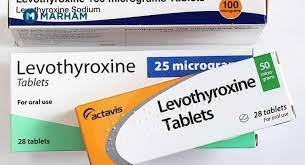A nurse is assessing a school-age child whose blood glucose level is 280 mg/dL. Which of the following findings should the nurse expect?
Pallor
Lethargy
Shallow respirations
Tremors
The Correct Answer is B
A. Pallor:
Pallor refers to paleness of the skin. While it can be associated with various medical conditions, it is not a typical symptom of hyperglycemia. Pallor is more commonly seen in conditions related to anemia or circulatory issues.
B. Lethargy
Explanation:
A blood glucose level of 280 mg/dL in a school-age child indicates hyperglycemia, which is an abnormally high level of glucose in the blood. Hyperglycemia commonly occurs in diabetes mellitus, specifically in Type 1 or Type 2 diabetes. Lethargy is a symptom associated with high blood glucose levels. It is characterized by a state of extreme tiredness, sluggishness, and reduced responsiveness. Hyperglycemia can lead to an inadequate supply of glucose to the brain cells, which can result in lethargy and confusion.
C. Shallow respirations:
Shallow respirations typically do not directly correlate with high blood glucose levels. Hyperglycemia's primary symptoms are related to changes in metabolism and glucose utilization, and it doesn't usually affect respiratory patterns in the same way that, for instance, respiratory distress might occur with conditions like ketoacidosis in diabetes.
D. Tremors:
Tremors, or uncontrollable shaking or trembling, are more commonly associated with hypoglycemia (low blood glucose levels) rather than hyperglycemia. Low blood glucose levels can cause the body to release adrenaline, leading to symptoms like tremors, anxiety, and sweating.
Nursing Test Bank
Naxlex Comprehensive Predictor Exams
Related Questions
Correct Answer is A
Explanation
A. Levothyroxine
Correct Answer: Levothyroxine should be administered before breakfast.
Explanation: Levothyroxine is a synthetic thyroid hormone used to treat hypothyroidism. It needs to be taken on an empty stomach, at least 30 minutes before eating, to ensure proper absorption. Food can interfere with its absorption, especially foods containing calcium, iron, and fiber.
B. Digoxin
Incorrect Explanation: Digoxin does not need to be administered before breakfast.
Explanation: Digoxin is a medication used to treat heart conditions like congestive heart failure and atrial fibrillation. It doesn't have specific instructions regarding administration in relation to meals. It's important to administer digoxin consistently at the same time every day, but it doesn't need to be taken specifically before or after breakfast.
C. Divalproex
Incorrect Explanation: Divalproex does not need to be administered before breakfast.
Explanation: Divalproex is used to treat conditions like epilepsy and bipolar disorder. It can be taken with or without food. While taking it with food might reduce the likelihood of stomach upset, there's no requirement to take it specifically before breakfast.
D. Mycostatin Mouthwash
Incorrect Explanation: Mycostatin mouthwash is not related to breakfast timing.
Explanation: Mycostatin is an antifungal medication used to treat fungal infections in the mouth (oral thrush). Its administration is not linked to meal times. It's typically swished around in the mouth and then swallowed or spit out, depending on the specific instructions provided by the healthcare provider.

Correct Answer is B
Explanation
A. Maintain a saline-lock:
Maintaining a saline lock is important for potential intravenous access, but it is not the most urgent priority compared to actions that directly monitor the child's condition and help manage the disease.
B. Check the child's daily weight:
Monitoring daily weight is crucial in acute glomerulonephritis, as it helps assess fluid balance and detect early signs of fluid retention or worsening kidney function, which are key concerns in this condition. This makes it a priority action.
C. Place the child on a no-salt-added diet:
While dietary modifications can be important for managing various health conditions, including kidney issues, this is not the top priority in this situation. Reducing salt intake can help manage fluid retention, but it is not the nurse's priority action at this moment.
D. Educate the parents about potential complications:
Patient education is crucial, especially in chronic conditions, but in this acute care scenario, the nurse's immediate priority is to address the child's needs. Educating parents about potential complications should be done, but it's not the most immediate action.
Whether you are a student looking to ace your exams or a practicing nurse seeking to enhance your expertise , our nursing education contents will empower you with the confidence and competence to make a difference in the lives of patients and become a respected leader in the healthcare field.
Visit Naxlex, invest in your future and unlock endless possibilities with our unparalleled nursing education contents today
Report Wrong Answer on the Current Question
Do you disagree with the answer? If yes, what is your expected answer? Explain.
Kindly be descriptive with the issue you are facing.
